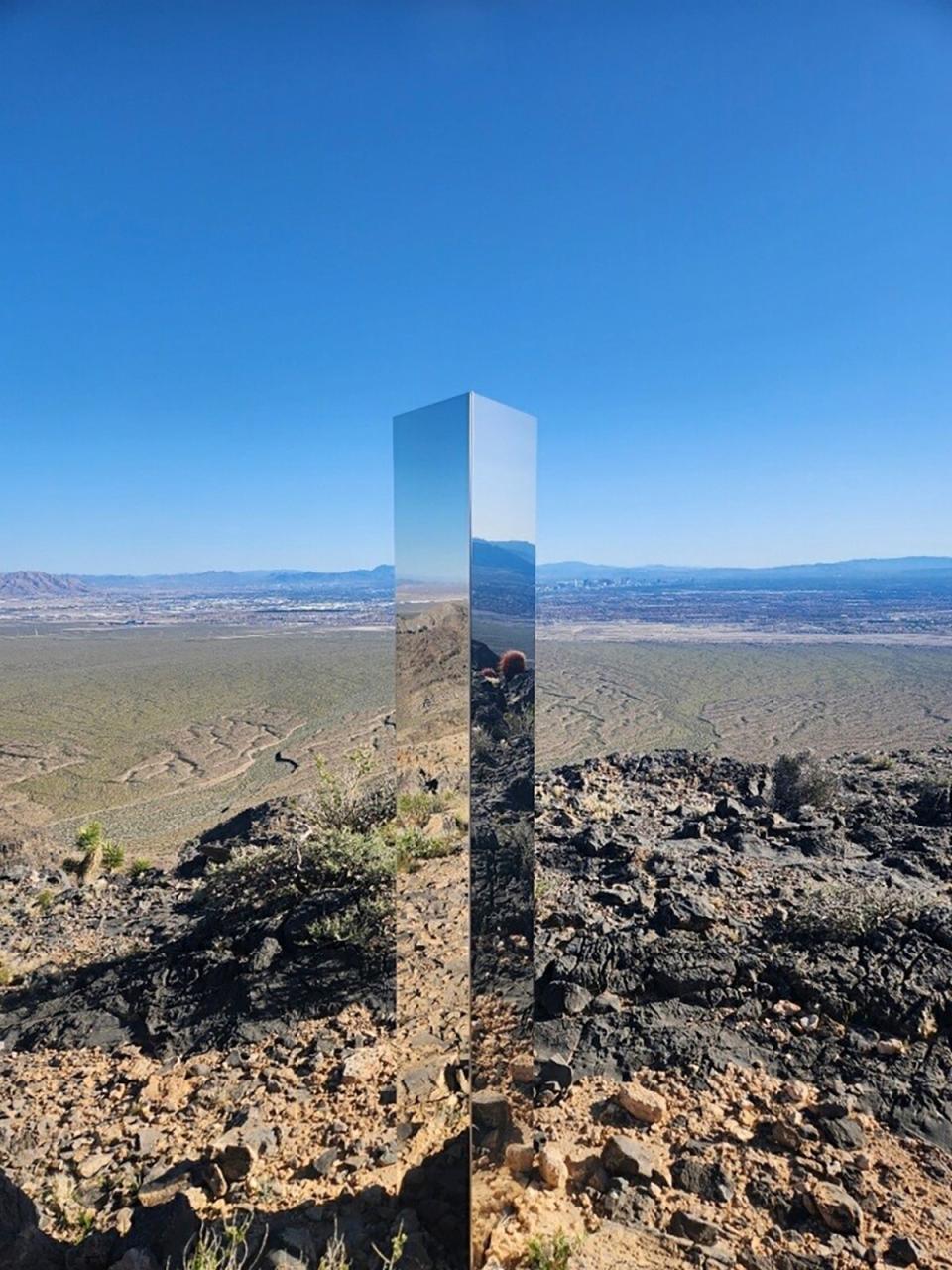The mystery monolith returns! Mirrored structure appears again in Las Vegas desert

The mysterious monolith has returned.
The mirrored structure was spotted near Gass Peak, Nevada, on June 16, around 45 miles from Las Vegas.
It’s the first time that the monolith has been seen near Las Vegas since one appeared four years ago in Sin City. Since 2020, similar monoliths have popped up in locations across the globe including Utah, California, New Mexico, and Romania.
Members of the Las Vegas Metro Search and Rescue team spotted the latest sighting in the desert, according to KCVW.

Though "monolith" is technically a misnomer for the object — a monolith is a single, large stone, typically carved into an obelisk or other object — the reflective pillars have taken on the name likely as a reference to the towering, black, evolution machines depicted in 2001: A Space Odyssey.
The Las Vegas search and rescue team used the odd discovery to promote hiking safety tips on its social media pages.
Each of the monoliths over the last four years have been between 10 and 12 feet tall, and appear without warning. They then disappear without fanfare.
While the monolith's first appearance in Las Vegas was on a populated city street, other appearances have been in remote wilderness areas.
A monolith was found in the Utah desert on 18 November, 2020, and disappeared on 27 November of the same year. The same day the first monolith disappeared, a second one appeared outside the Romanian city of Piatra Neamt. That monolith disappeared on 2 December.
The same day the Romanian monolith disappeared, a third monolith appeared on top of Pine Mountain in Atascadero, California on 2 December, disappeared the next day when a group of right-wingers tore it down, proclaiming "Christ is King" and "America First," only for the monolith to return on 4 December, according to VICE.
A fourth monolith appeared in Albuquerque, New Mexico on 7 December, and was removed the same day.
The provenance of the pillars is still unclear. A group called "The Most Famous Artist" has taken credit for both the Utah and California monoliths, and offers "authentic alien monoliths" for sale on its website, according to Mashable.
Customers can have their own towering monolith for the price of $45,000.
However, another artist, Travis Kenney, objected to the claim, and said it was his group that erected the California monolith, and provided photos of him and his crew erecting the pillar, Vox reported.

John McCracken, an artist who died in 2011, was a name frequently floated as the potential creator of the original Utah monument. McCracken believed in aliens, and is known for creating freestanding metal slabs he called "planks" that he believed inspired the look of the monolith in 2001: A Space Odyssey.
A report in The Art Newspaper noted the striking resemblance between the Utah monolith and McCracken's planks, and the artist's son, Patrick McCraken, told the New York Times that his father had often shared with him his desire to set up art installations in remote areas for hikers to stumble upon while trekking.
“He was inspired by the idea of alien visitors leaving objects that resembled his work, or that his work resembled,” Patrick McCraken told the paper. “This discovery of a monolith piece — that’s very much in line with his artistic vision.”
David Zwirner, a gallery owner who represents McCraken's estate, told the paper that he believed the Utah monolith was a genuine piece created by McCraken, but then retracted his statement after he saw screws and rivets, which he said McCracken never would have left visible in one of his own pieces, according to Vox.
Due to the number of monoliths that have been spotted since 2020, it is almost assured that there is no single group or individual erecting the strange pillars.

 Yahoo News
Yahoo News 
